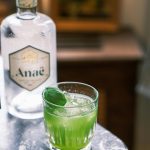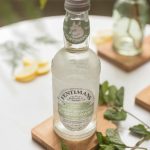Your cart is currently empty!

Steven Coulson
Steven has been drinking beers, wines and spirits for decades and has a propensity to go about them at length after a few drinks.
Latest Posts
- My wife found out our favorite Gin for martinis was discontinued. I think we are good for a while…

- Oregon Road Trip: Freeland Spirits Garden Botanicals Gin

- Botanist with Trader Joe’s Lemon and Elderflower Soda

- I’m one of the worlds leading buyers of craft gin in the world and a international spirit judge AMA

- I’m blown away…. By how let down I am by this Gin.

Categories
Tags
Social Links

Exploring the Potential Psychoactive Effects of Hops in Beer
When it comes to beer, particularly India Pale Ales (IPAs), the conversation around hops often evokes strong opinions. Personally, I have always gravitated towards IPAs with high International Bitterness Units (IBUs), finding them more satisfying than their less intensely hopped counterparts. This preference sparked a debate when I shared my thoughts previously: some echoed my sentiments, while others attributed my experience to the higher alcohol content in these beers.
Intrigued, I decided to dig deeper. I experimented with various styles, particularly “Cold” IPAs, which pack a punch in terms of alcohol by volume (ABV) but contain fewer hops compared to traditional West Coast IPAs. I noticed that Imperial IPAs, despite their elevated ABV, use minimal hopping and didn’t elicit the same enjoyable response for me. In contrast, a classic West Coast IPA with a moderate ABV truly hits the mark.
What stands out to me is the unique sensation I experience from hoppy beers, which feels distinct from the usual alcohol buzz. Instead, it comes across as a more cerebral and invigorating effect. This leads me to contemplate the idea that hops might possess psychoactive properties under certain conditions.
Perhaps the fermentation process enhances the bioavailability of hop compounds, or maybe there’s a synergistic relationship between alcohol and hops that allows certain elements to penetrate the blood-brain barrier. The key takeaway, however, is that I don’t experience any adverse reactions typically associated with hop sensitivity—there are no unpleasant side effects like hives or itching; rather, it’s a sense of euphoria that I’m left with.
It raises an interesting question: why have hops become a staple in brewing? Historically, not all beers contained hops, but once their benefits were recognized, the world embraced them wholeheartedly. With the prevalence of hops in the beer industry, there must be a compelling reason that warrants their long-standing inclusion.
In this exploration of hops, I encourage fellow beer enthusiasts to reflect on their experiences and consider what makes a particular brew stand out. Is it the hops, the alcohol content, or perhaps something yet to be fully understood? The journey of discovering your ideal beer is not just about taste but also understanding the complex interactions at play. Cheers!
